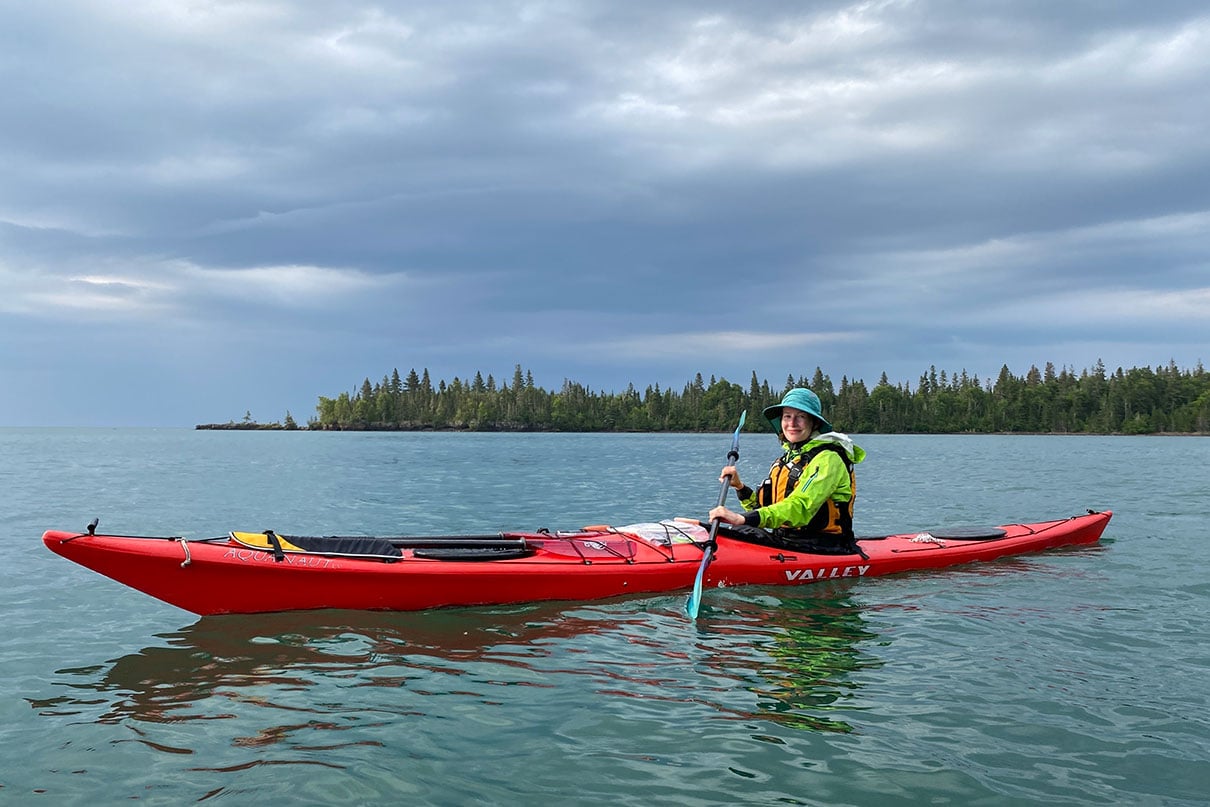Whether you’re a canoeist, kayaker or paddleboarder, headed out for a multi-day trip or an afternoon jaunt, keeping your belongings dry is of the utmost importance. It’s not just a matter of having dry socks to change into, or keeping your new phone from sinking to the bottom of the lake either. It’s also a matter of safety.
Conditions can change fast out there and anything can happen. Having a dry change of clothes, food, sleeping bag or even just an extra layer in a multitude of situations can make all the difference.
We tested dry bags in a variety of sizes and styles, at a range of price points, to see how they held up during a variety of watery adventures. The dry bag market has grown into a crowded field, and the favorites we’ve selected here represent just a portion of worthwhile bags available today. See our picks for the best dry bags below.
Best dry bags for 2025: Our top picks
Best roll-top dry bags
Skog Å Kust Drysåk 10L

$26.95 USD | skogakust.com
Buy from:
Why we love it
This budget-friendly 10-liter dry bag from Skog Å Kust is fashionable and functional. Made of a thick PVC with a classic roll-top design, it protects gear against splashes and brief dunkings. Most suited to carrying snacks and small essentials during relaxed outings, and comfortably carried via the trendy crossbody strap. Available in 13 eye-catching colors and prints, it’s no surprise this Drysåk got oodles of compliments from passing paddlers.
Reasons to buy
- Budget-friendly and reliable
- Unique color options
- Front zip pocket to keep items handy
- Clip-on detachable sling
- Great size for day trips
Consider another if
- You prefer a lighter, more pliable material
- Seeking a PVC alternative
Bottom line
With unique color patterns the Skog Å Kust Drysåk not only holds extra layers and lunch, it also adds a touch of personality on the deck of your paddleboard.
SealLine Discovery View Dry Bag 10L
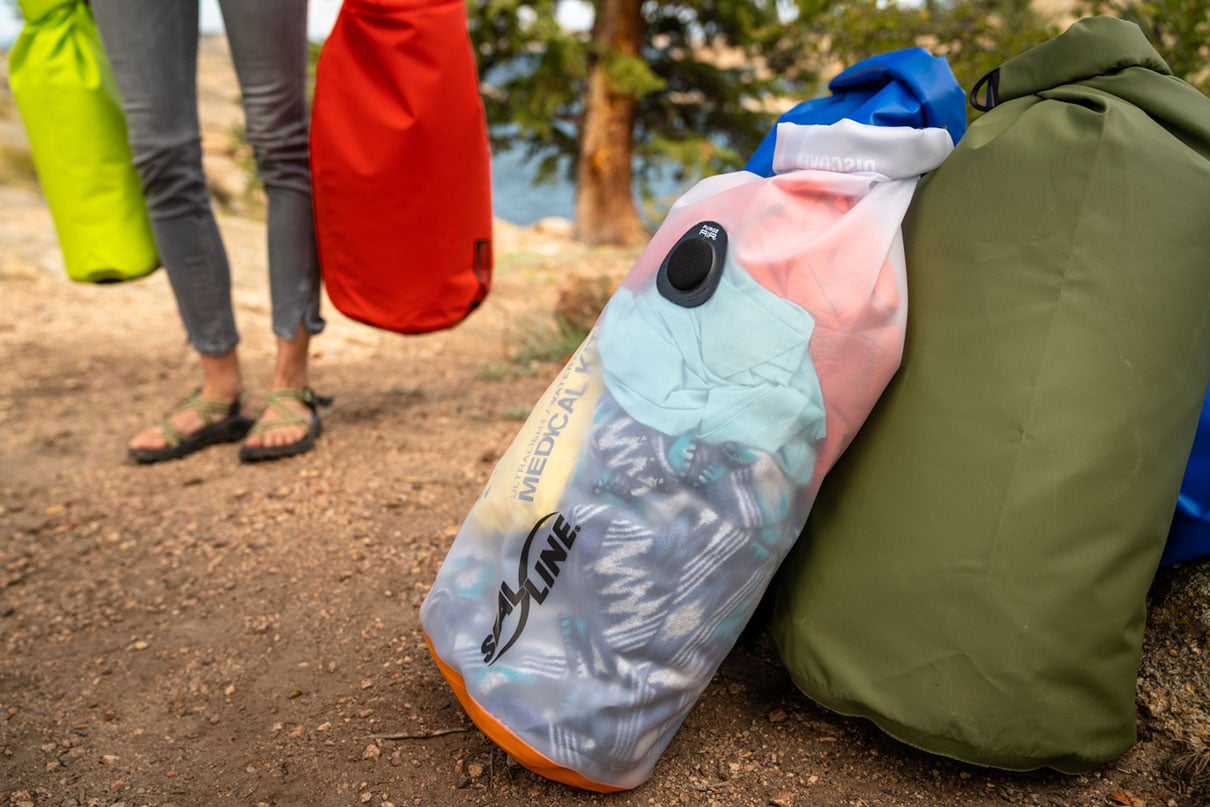
$39.95 USD | cascadedesigns.com
Buy from:
Why we love it
You know the feeling of peeking into every dry bag before finally finding the item you’re looking for? Stop that with easy identification thanks to Discovery View’s transparent polyurethane body. An innovative purge valve vents trapped air, allowing this dry bag to compress further after being sealed—perfect for tight packing jobs and bulky items like sleeping bags or clothes. The urethane is more reliably waterproof than waterproof-breathable fabrics and, at 9.7 ounces, it weighs a bit more too. Colored bottoms help distinguish between bags. Also available in five-, 20- and 30-liter sizes.
Reasons to buy
- Translucent bag lets you see what’s inside before digging around
- PurgeAir valves lets you compress bag after rolling
- Color-coded bottoms help organize trip packing
Consider another if
- You don’t want your belongings visible
- You prefer the traditional construction of PVC bags
Bottom line
Never unpack your whole dry bag again in search of a headlamp or car keys thanks to the transparent polyurethane construction of the SealLine Discovery dry bag.

Osprey Ultralight Dry Sack 20L
$28.00 USD | osprey.com
Buy from:
Why we love it
This stuff sack lives up to its name and weighs an impressively airy 1.6 ounces. The thin material of the Osprey Ultralight requires the protection of an outer pack, but don’t make the mistake of assuming it’s delicate—it’s been my go-to for tripping clothes for more than five years. Short of submersion, its water-repelling fabric and roll-top design offer the protection dry stuff needs. A flat-bottomed rectangular design makes packing it within a larger waterproof backpack easy.
Reasons to buy
- Lightweight and crushes down to stow away when empty
- One bag to use for on the water and on the trail
Consider another if
- You need a heavy duty construction
Bottom line
Osprey is a big name in the backpacking realm, and their Ultralight Dry Sack is the choice for the multi-sport paddler who needs one dry bag whether they are spending the day kayaking a river or seeking an organization solution on their thru-hike.
Best duffel dry bags
NRS Expedition DriDuffel 35L
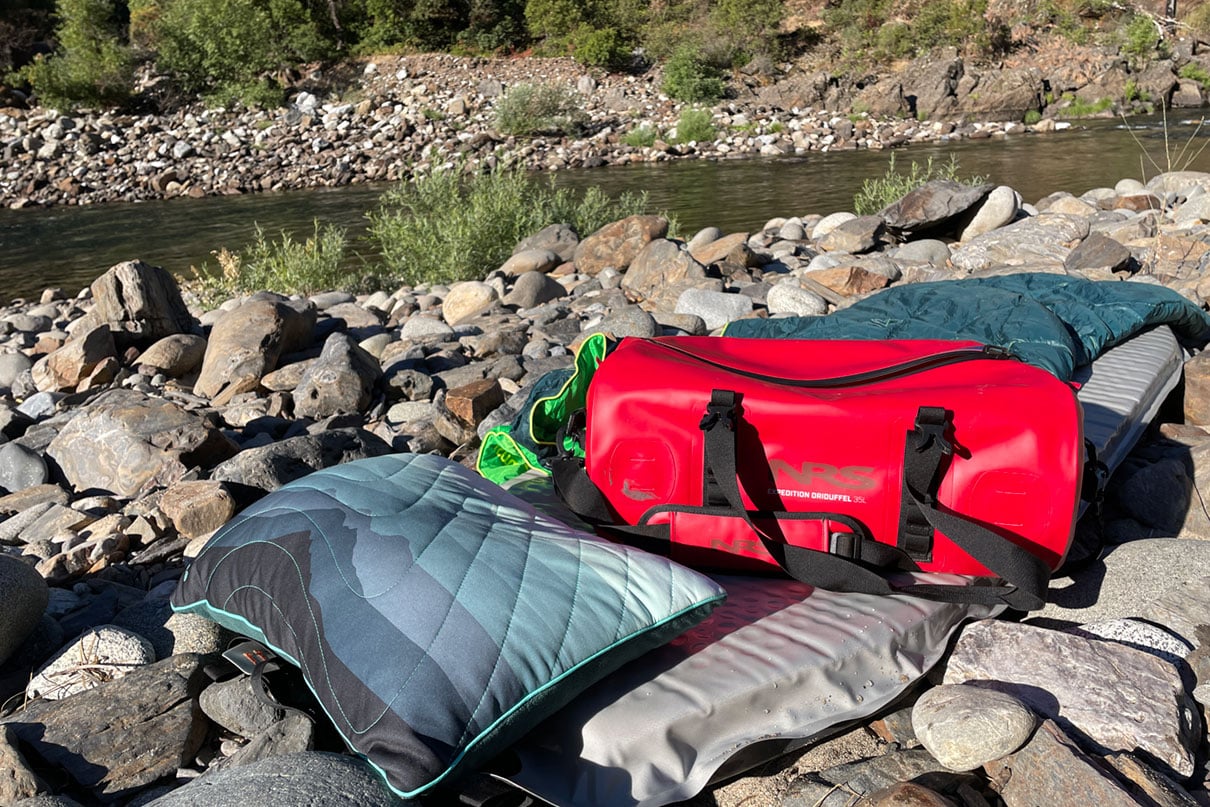
$289.95 USD | nrs.com
Buy from:
Why we love it
The Expedition DriDuffel is a 12- by 20-inch fully submersible duffel-style dry bag from NRS built for multiday river trips. We love this burly bag’s easy-access wide mouth, and its waterproof TRU Zip zipper and heavy-duty TPU-coated nylon keep gear bone dry. Integrated webbing chains offer multiple attachment points, and the shoulder strap and dual haul handles offer easy-carry options. Also available in 12-, 70- and 105-liter options.
Reasons to buy
- Toothless zipper provides a submersible seal
- TPU-coated nylon offers heavy duty PVC alternative
- Wide opening makes gear easier to find than a roll-top
- Shape and exterior webbing allows for secure storage on river trips
Consider another if
- You prefer a roll-top or seam seal style opening
- Need a backpack style dry bag for portages or travel
- Budget-friendly outweighs performance in priorities
Bottom line
The easy to access duffel-style of the Expedition DriDuffel will quickly make it your go to bag on river trips.
Watershed Ocoee
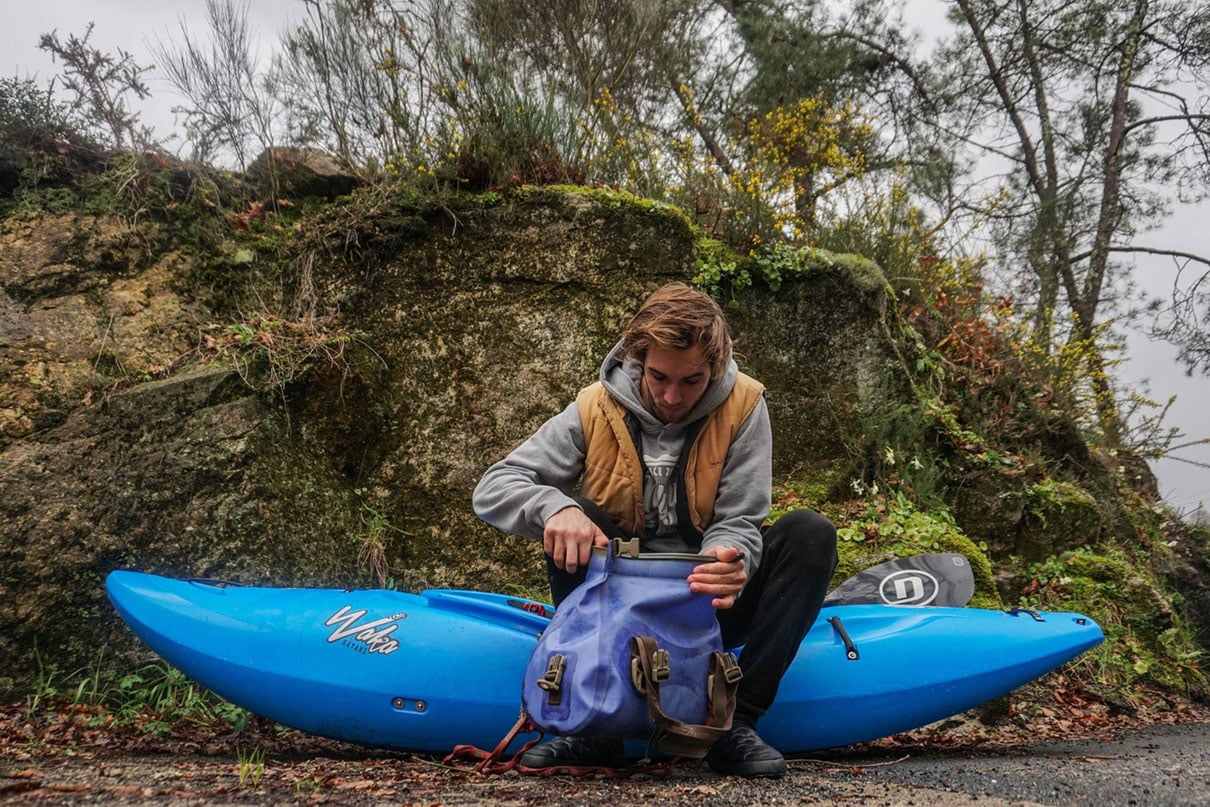
$159.00 USD | drybags.com
Buy from:
Why we love it
The stout 10.5-liter Ocoee is the soft-sided dry bag of choice for camera gear on Paddling Magazine editorial trips. It fits tidily behind the seat of the kayak, inside a hatch, or under the seat of an oar rig. This impenetrable design lives up to its claim of being a 100-percent waterproof and submersible bag thanks to its ZipDry seal, which looks like a giant Ziploc seam running across its top. The big mouth on this bag makes accessing contents easy, plus it’s easy to open and close—once you know the secret. The Ocoee has the added option of a purge valve, and bag specific padded liner and internal dividers to protect your gear further. This bomber construction is surprisingly lightweight at just over a pound. It also features burly lash-down points and a comfortable handle for toting around. Worth the investment for avid paddlers.
Reasons to buy
- Small size fits well in kayaks or as a personal dry bag on river trips
- Carry handle and multiple lash points
- Combination of ZipDry seam and roll-top
- Options for padded liner and internal dividers
Consider another if
- You prefer a zipper-style closure or roll-top alone
- Need a backpack style dry bag for portages and travel
- Budget-friendly outweighs performance in priorities
Bottom line
Watershed’s duffels have long been the dry bags kayakers have trusted to keep expensive camera gear safe.
Best dry bag backpacks
Yeti Panga 28L
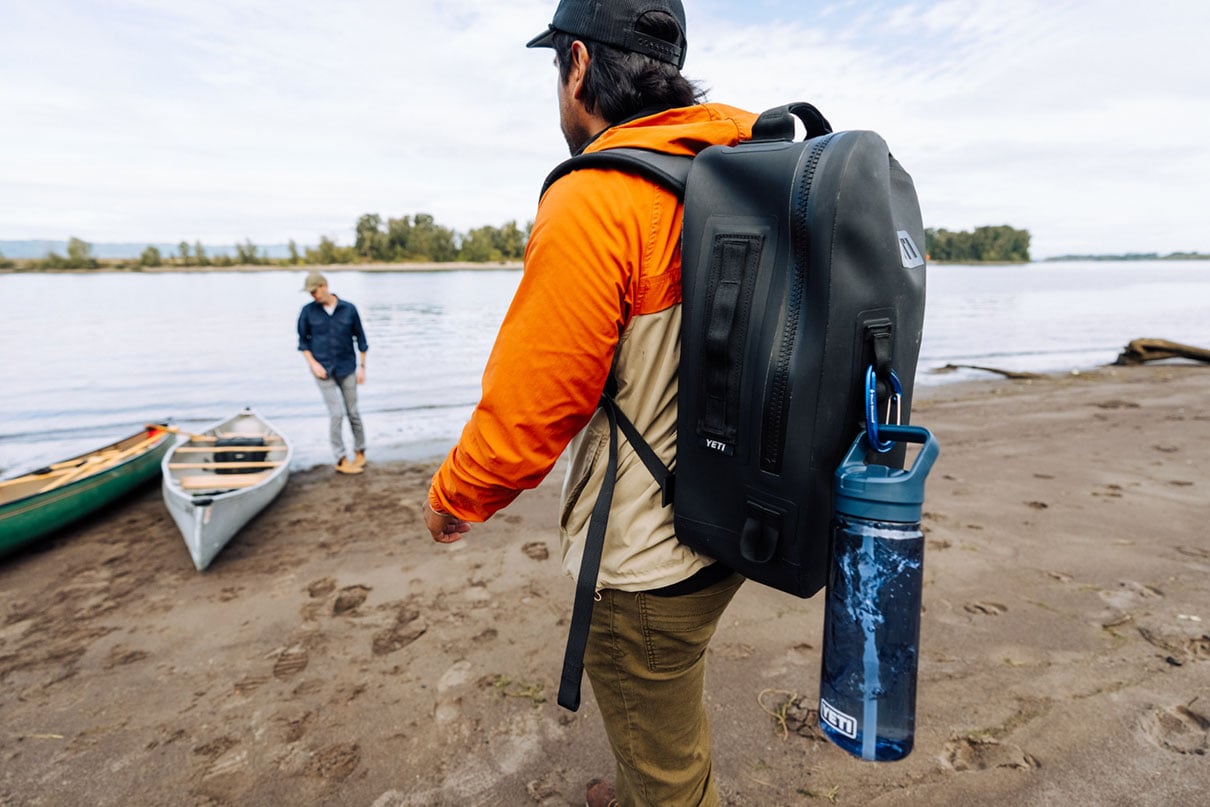
$300.00 USD | yeti.com
Buy from:
Why we love it
Bombproof durability meets designer backpack. The submersible Panga 28 waterproof backpack from Yeti is an airtight fortress, as suited for wet and rough adventures as it is for a travel carry-on. We’d feel comfortable putting camera equipment or a laptop in the Panga and setting off in a monsoon. Interior storage pockets help keep small items organized. The waist belt and chest straps are a nice touch. The Panga is not a cooler, but for the price it would be cooler if it was.
Reasons to buy
- Submersible IPX7 waterproof backpack
- Familiar toothed zipper
- Padded backrest and shoulder straps
- Puncture and abrasion-resistant nylon and TPU-laminated outer construction
- Interior compartments for organization
Consider another if
- You need your bag moldable to storage spaces
- You need a more budget-minded bag
Bottom line
The Yeti Panga backpack doesn’t mess around. If you need a bag tough enough to handle going from carry-on, to thrown on a paddleboard or boat, then hiked up a trail, the bag Panga is the tool for the job.
Mustang Survival 22L Highwater

$119.99 USD | mustangsurvival.com
Buy from:
Why we love it
This lightweight waterproof backpack from Mustang Survival features roll-top closure, PVC-free ripstop nylon shell and three quick-access exterior drop-in mesh pockets with key clip. Daytrippers will appreciate the foam padded shoulder straps with adjustable sternum closure. The Highwater is the perfect size bag for a change of clothes, lunch and small essentials, and when not in use it packs almost flat.
Reasons to buy
- Budget friendly waterproof backpack
- Day trip backpack
- Roll-top closure
- Exterior pocket to place a layer or loose gear during portages
- Ripstop nylon PVC-alternative
Consider another if
- A heavy duty construction is top priority
- You prefer the functionality of a zipper opening
Bottom line
The 22-liter Highwater is a budget-minded waterproof backpack. It works well for day trips when you want to throw a bag on your back to hike your paddleboard or canoe to the water.
Advanced Elements Blast 22
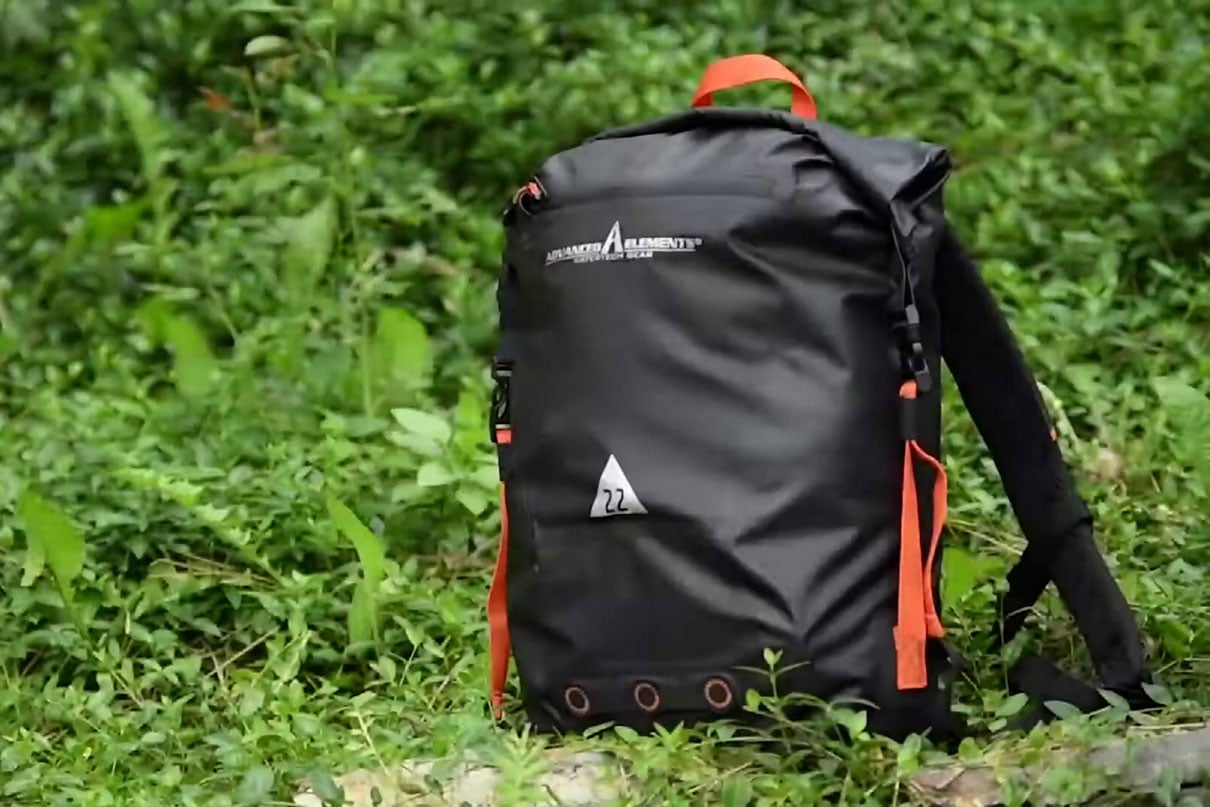
$107.99 USD | advancedelements.com
Buy from:
Why we love it
With waterproof welded seam construction, a large top opening and an ultra-cushy ventilated back panel, the Blast 22 from Advanced Elements is a rugged, no-frills choice for anywhere-anytime day trips. We’d use this as a versatile day bag, side hike companion and for commuting across town. A water-resistant front zip pocket offers easy access to essentials.
Reasons to buy
- Padded, vented back panel
- Wide-mouth roll-top closure
- Budget-friendly price tag for a waterproof backpack
Consider another if
- Heavy-duty construction is a top priority
- You prefer a zippered closure
Bottom line
The Blast 22-liter fulfills the essential need of a dry backpack with its simple roll-top closure. Thanks to its no frills design the price tag stays low while keeping your layers dry whether you use it for a canoe trip or morning bike commute.
Dry bag buying advice
Dry bags are available in a number of styles and constructions and which you choose depends largely on how much room you need and the type of watercraft you’ll be storing it on whether it’s a kayak, paddleboard, raft, canoe or otherwise. For example a waterproof backpack is great for travel and you can tie it into your raft or strap to the deck of your paddleboard, however it may be impossible to fit in the hatch of a sit-inside kayak. For a kayak, smaller roll-top bags may be a better choice to slide into hatches, in which case you may pick up a few for modular storage.
Choosing a style
Roll-top dry bag
These are the standard cube storage system of paddling. The opening is at the top, just like a stuffsack. They have an elongated shape and come in a variety of sizes to keep everything from a few personal items for a day trip to big enough to hold all your belongings for weeks rafting the Grand Canyon.
Dry bag backpack/rucksack
Some dry bags are built like backpacks—with either a zipper or a roll-top closure system and shoulder straps to carry the bag. These are useful when packing lots of gear that will need to be portaged around rapids or from one lake to another. Instead of lugging around a heavy duffel, you can simply load the dry bag on your back with ease.
Duffel dry bag
Duffel dry bags are useful for longer multi-day trips where you will be living out of the dry bag. When spending two or more weeks on a river, lake or ocean, it is nice to be able to open your dry bag and have everything clearly laid out in front of you. With a duffel closure system, it is easy to organize and find things in your dry bag.
Choosing a dry bag closure
Roll-top dry bag
Roll-top dry bags are the most common closure system for dry bags. They ensure a water-tight seal by rolling the top of the dry bag over itself several times, then buckling either end together. Simple, effective, and often the cheapest dry bag option.
Zipper-style dry bags
While all dry bags are technically “dry,” I highly recommend using a zip-top dry bag for your phone or camera. Zipper closures leave a smaller chance of error when closing the dry bag, thus ensuring a better chance of keeping everything completely dry. Smaller zipper dry bags are nice to use as kayak dry bags. They fit on your lap and provide easy access to anything you need to keep handy while paddling.
Deciding which dry bag sizes to have
5L to 15L
These smaller sizes are commonly used for day trips to carry snacks, phones, cameras and layers. They are also often carried in a kayaker’s lap on a multi-day trip to hold things that will be needed throughout the day.
16L to 30L
Dry bags in this size range are commonly stowed in the stern of a kayak, or used as a smaller gear bag attached to a SUP or raft. This is a good size for storing a sleeping bag and sleeping pad.
30L to 50L
The mid-range sizes of dry bags are good for single-night trips, or for various gear needs on a raft or SUP. These sizes won’t fit in a kayak, but are perfect for other open-topped crafts. Often coming with backpack straps, they are easy to portage and move around.
50L to 110L
Best for multi-day rafting trips, as they will not fit on a SUP or in a kayak. These dry bag sizes are perfect for carrying each crew member’s personal gear for a multi-day expedition.
Best dry bag brands
- NRS
- Watershed
- Yeti
- Fishpond
- Sealline
- Sea to Summit
- Osprey
- MEC
- Exped
- Mustang Survival
- Advanced Elements
How we tested the best dry bags on this list
Over the course of river expeditions, long-distance tours, and reporting trips we’ve packed along a wide variety of dry bags to see which hold up to the rigors and abuse of paddling. On expeditions and extended trips, a dry bag failure is catastrophic. To make our best of list, these dry bags had to be above all else reliable. Beyond this, it’s the little details, like how much easier they make life when you are exhausted or in the middle of a storm, that make the waterproof bags we’ve chosen stand out.

Why trust us
A big wave freestyle kayaker, Brooke Hess is from Missoula, Montana, and a member of the U.S. National Freestyle Kayak Team. She has completed a 1,000-mile source-to-sea journey of the Salmon River to the Pacific Ocean.

Kaydi is the editor-in-chief of Paddling Magazine. She has a Bachelor in Journalism from Toronto Metropolitan University. If she’s not traversing Lake Superior by sea kayak or cold-plunging in Lake Ontario she’s poring over a map dreaming up her next paddling adventure.
Total combined volume of the dry bags featured here is 337.5 liters. Have they been filled with A) the entire contents of the editor’s linen closet, plus the pillows off her bed? Or B) four winter parkas, 11 sweaters, three sleeping bags and a small dog bed? The answer is C) All of the above. | Feature photo: Kaydi Pyette


